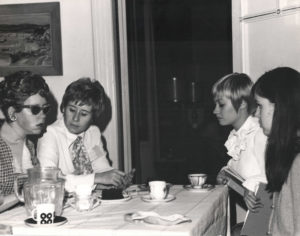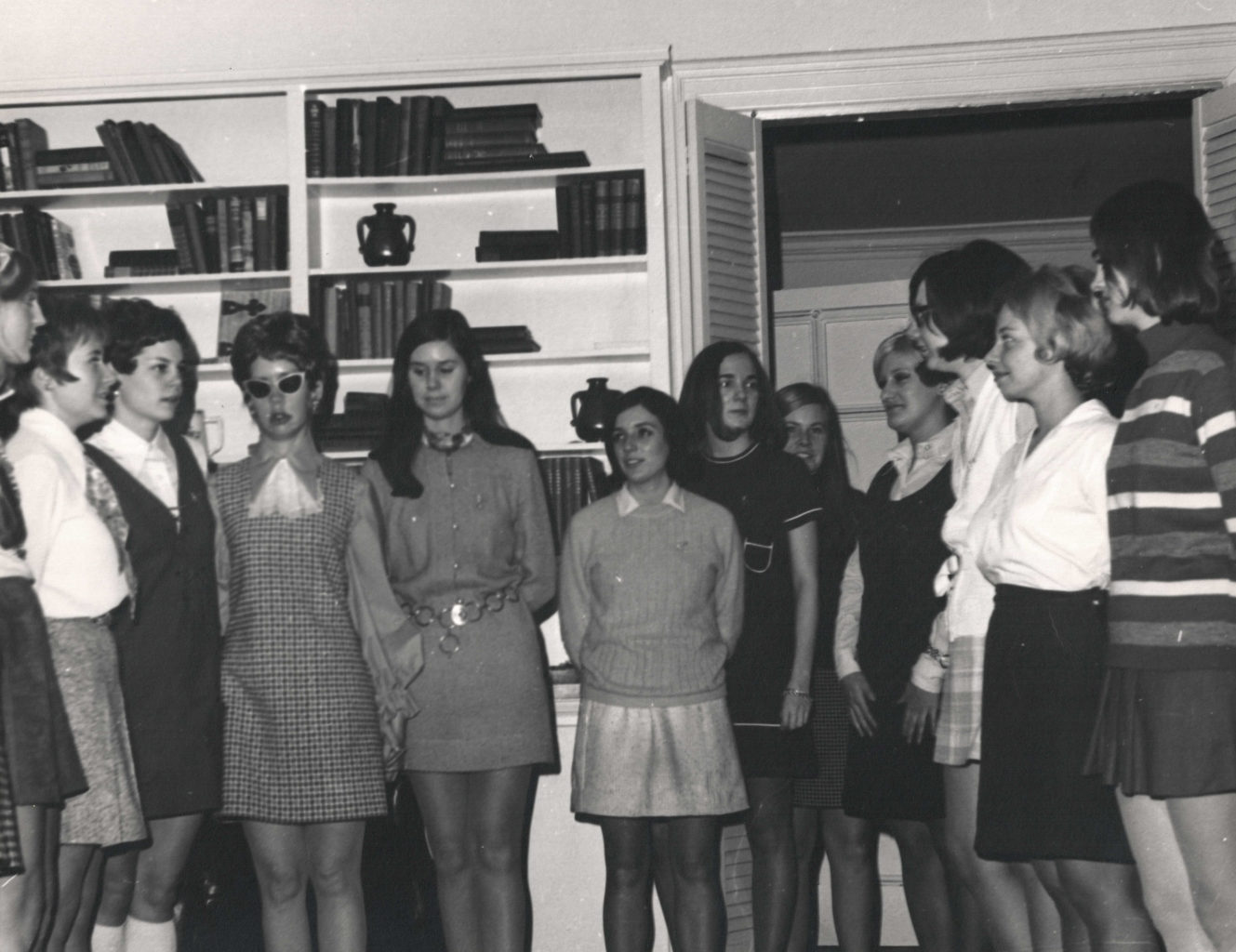Mae Brown, A World Without Sight and Sound

In this black and white photo, Mae Brown is seated at the far left of a table with four other women. There are tea cups and a jar of water on the table.
Today, November 4, marks the anniversary of the death of Mae Brown. Miss Brown was the second deafblind woman (after Helen Keller) and the first deafblind Canadian to earn a university degree, graduating from the University of Toronto in 1972.
Following graduation, Miss Brown held a pioneer role at the CNIB to help persons who are deafblind. To do this, she enrolled in courses and established international connections to gain information about the increasingly more understood condition of deafblindness. She established the Hand Highway Club, now called the Deafblind Association of Toronto to provide a social outlet for persons who were deafblind.
Born in Thunder Bay in 1935, Miss Brown’s sight and hearing deteriorated throughout her childhood; at high school her vision was such that she could not read a blackboard, and she dropped out. An operation performed on Miss Brown later in her teenage years to remove a brain tumor led to the complete loss of her hearing as well.
After, Miss Brown registered with CNIB, who provided her with training in communication methods such as braille and employment. CNIB also provided Miss Brown with a tutor to help her complete her high school education. When Miss Brown enrolled at the University of Toronto, CNIB hired Joan Mactavish as her intervenor, as well as a team of 35 volunteers who translated Miss Brown’s textbooks into braille.
Mrs. Mactavish translated lectures and exams for Miss Brown by finger-spelling into Miss Brown’s hand. Miss Brown was able to give her responses orally. Some exams took multiple days to complete using this process, and Miss Brown’s degree in history and psychology ultimately took 5 years for her to earn. Not bad considering her dual sensory loss.
After graduating Miss Brown returned to employment with CNIB, becoming head of deafblind affairs and implementing networks and services for deafblind people in Canada. These included social groups, publications, and testing of technological devices.
Miss Brown died suddenly on November 4, 1973 of another brain tumor. An autopsy revealed that she had neurofibromatosis. Mrs. Mactavish continued to implement Miss Brown’s ideas for deafblind intervenor services after her death.
Their joint work was recognized by their induction into the Terry Fox Hall of Fame in 2002.
Mae Brown’s legacy is still felt today. She was and continues to be a champion for people who are deafblind. Her service to the community is invaluable and her personal successes were the result of sheer determination and grit.
“The sun is rising in the sky when two hands meet in friendship.” ~Mae Brown
Mae Brown Collection
Today, many Mae Brown artifacts can be found in the Mae Brown Room at the Canadian Helen Keller Centre. The collection consists of her university degree, personal letters, photographs, her university graduation ring, her brailler, among many other personal items. Stay tuned this week, for more about these historical pieces.








